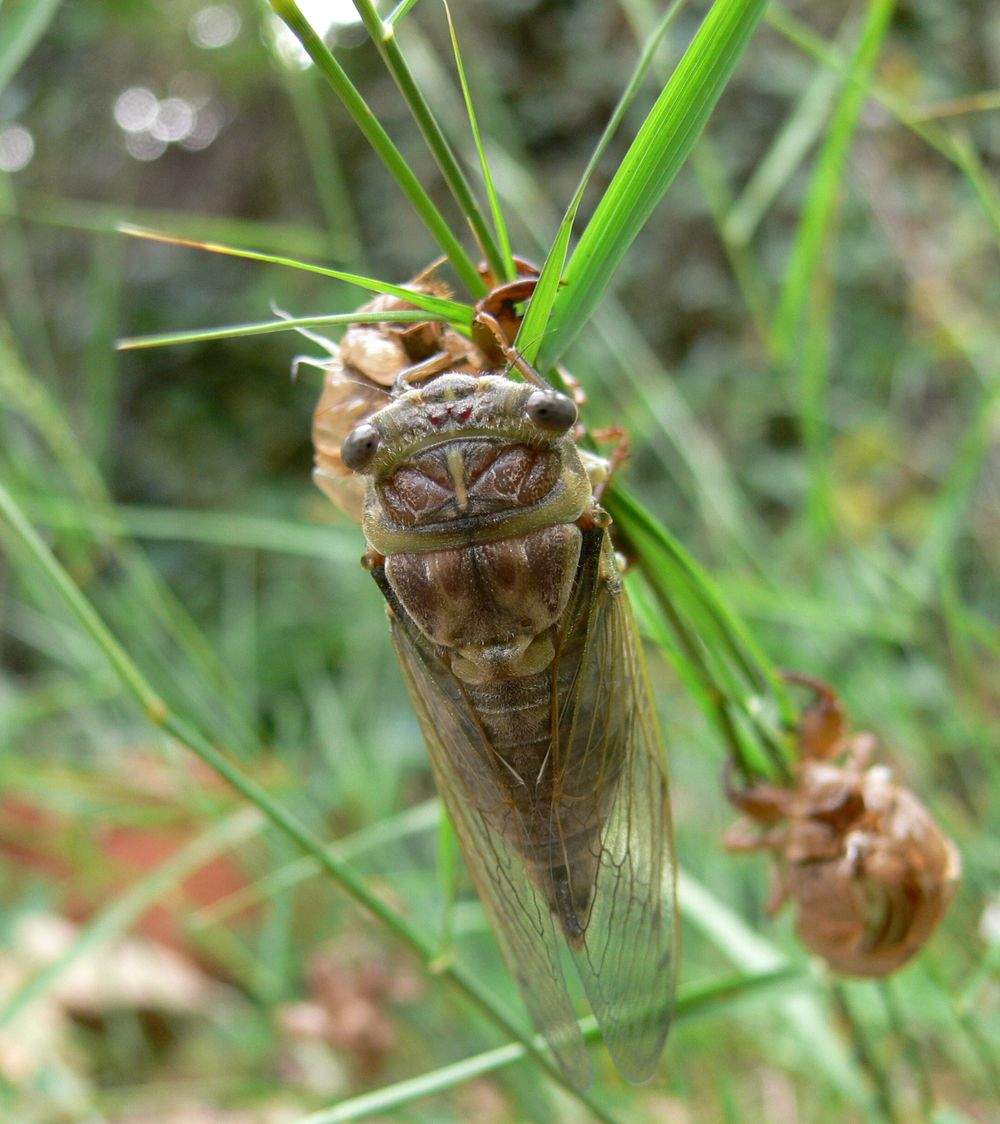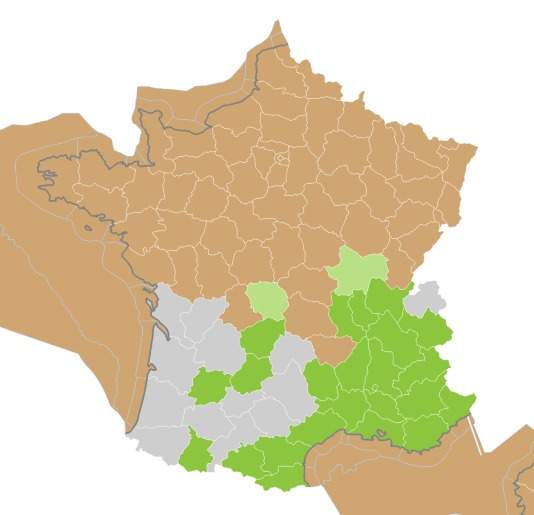Lyristes plebejus known as (la) cigale plébéienne or (la) grande cigale commune
Measuring up to 4 or even 5cm acccording to some sources, (however I think 4cm is more likely), and with a wingspan of 10cm this is the largest European cicada and rightfully deserves the name of 'great cicada',
They are grey in colour and in common with all other species of Cicadidae have four translucent wings and spines on the anterior femurs. In all cicadas sexual dimorphism is primarily "musical" with the males having the abilty to produce sound and with this species the males have very wide rounded lids that completely cover the cymbals. By vibrating these cymbals that are located on either side at the base of the abdomin they emit the shrill sound that they are so well known for and can be heard all day when the temperature is warm enough.
Females lay from 200 to 300 eggs that are normally deposited in small groups into more or less woody and dried plants. This can be shrub branches, but also old floral stems of umbelliferae, asphodeles or various other large herbaceous stems.
Hatching, usually takes place in September-October when the young "pre-larvae" emerge and have their first molt at almost at the same time. Like a spider at the end of its thread, the young larvula can remain appended to a kind of short filament before letting itself fall to the ground, and burying itself there for a development requiring 5 years. Just like the adult, the larva has a rostrum allowing it to prick the roots of trees and shrubs, in order to take the juices necessary for its sustenance.
The larvae (and nymphs!) are endowed with very elaborate and powerful front legs, called burrowers, a kind of "Swiss Army knife" acting as a pickaxe, shovel, shear and pincer. The mobility of the terminal spur (actually the tibia!) associated with its position and conformation (sharp apex and sharp inner edge), makes that the paw is indeed able to dig, pinch, and shear (rootlets for example). Where the nature of the terrain obliges it (too hard, too dry, or too crumbly for example), the creature uses its urine to soften the substrate, and if necessary "masonry" its gallery. According to Michel Boulard (1988) the urine emitted for this purpose uses ventral aligners which lead to the level of the burrowing legs where it can be put to use. (Michel Boulard (born at Orléans on 9th April 1935) is a French entomologist specialising in cicadas. He is the author of the description of many genera and species of cicadas and was particularly interested in their song (cymbalization).
Adult active period is from June untill the end of August where they live in trees and shrubs feeding on their sap. Because of their very mimetic color and their ability to stop their singing as soon as you approach them, it is very difficult to spot them.
They are mainly in the south and south east of France but can be found as far north as a line roughly drawn between La Rochelle and Geneva, more so the Rhone valley.
To listen there is a sound file HERE

